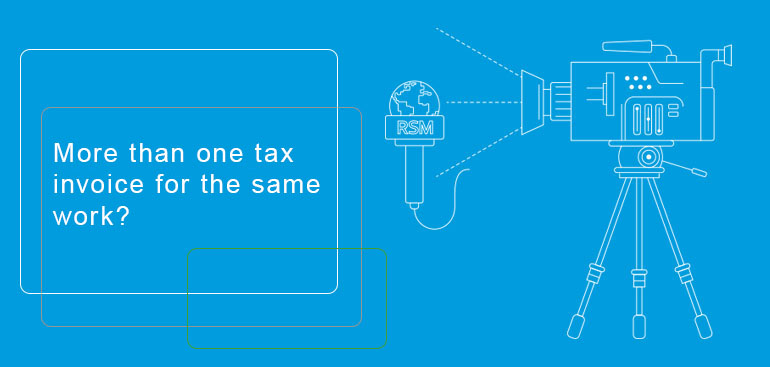
What happens when Inland Revenue contacts a business (not currently being audited by IR) to advise that the business has duplicated a GST invoice? That business scrambles to put its processes under a microscope, and what they subsequently see isn’t pleasant viewing.
A recent case involving a multi-million dollar turnover business was contacted by Inland Revenue to query GST invoices. The invoices were generated within a modular accounting software package. The duplicate invoices had the same tax invoice number, for the same job, but with two different customer names.
Context is everything, so it’s worth noting this business manufactures high value products which often means customers are constantly sourcing funding to pay for the goods.
So how did duplicate invoices get generated? The first invoice was generated at the time the manufacture of the product was completed and ready to distribute to the customer. The accounts team generated a tax invoice within Accredo and issued this invoice to their customer. (Note: Inland Revenue recognises a tax invoice as having been generated once it’s been issued to the customer – regardless of whether the invoice has been posted to Debtors Ledger or General Ledger – or not). In this case, the tax invoice had not yet been posted or completed within the system.
In the meantime, the customer was negotiating funding for the goods with a finance company. On securing finance, the customer asked the manufacturer to invoice the finance company – and not them - for the cost of the goods. The accounts team subsequently pulled up the invoice within Accredo, changed the customer name and address, with all other details remaining constant, and issued that tax invoice to the finance company, thereby effectively duplicating an invoice.
Simply put, this meant that:
- The manufacturer had issued two tax invoices for the same job and breached section (s24(1)(a)) of the GST Act stating only one tax invoice can be issued for each taxable supply
- The manufacturer was liable for up to $25,000 fine for first offence
- In theory, the customer and the finance company were both able to make a GST input claim
Interestingly, Inland Revenue contacted the manufacturer to advise the manufacturer was found in breach of duplicating tax invoices, not once but twice for two different jobs.
It didn’t take long for the manufacturer to determine the fault in their accounting processes. Part of the fault lay in the understanding (or lack of understanding) within the team in how to manage a change in tax invoice requirements. The team has now undertaken training to understand what a tax invoice is, when that tax invoice is recognised by Inland Revenue, how to manage changes to a tax invoice correctly, and how to manage accounting software functionalities to ensure the correct handling of tax invoices from start to finish.
The second part was in understanding the limitations of accounting software. In this case, the team now recognise that an invoice generated within their software can have any details within the tax invoice changed, at any time, before that invoice is posted in the system. However once printed or emailed to a customer, the invoice is deemed by Inland Revenue to be an active tax invoice. Should that invoice need to be changed, it must be credited and a new tax invoice generated with the correct information. Should a second and identical invoice be generated, this must be identified as a ‘COPY’. The manufacturer has since taken the additional step of working with their software specialist to write a script that ensures any invoice printed before it has been posted, is now ‘stamped’ with “This is not a tax invoice”. This allows an amendment to be made prior to the issue of the correct tax invoice subsequent to approval by the customer.
It should be noted that some online fully integrated software accounting packages allow the editing of invoices after they have been issued to the customer at any stage. A policy should be put in place to ensure that all copy invoices requested are marked as copies, and any amendments are handled in the correct manner.
If you’re not sure of the correct handling of tax invoices, don’t come under Inland Revenue’s microscope. Ring us first to review your processes. The trick is to stay on the right side of Inland Revenue.
This article was authored by Michelle Wylde. You can contact Michelle at [email protected].
